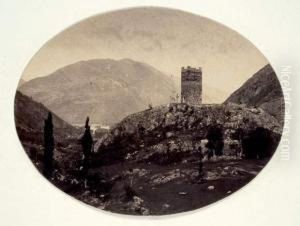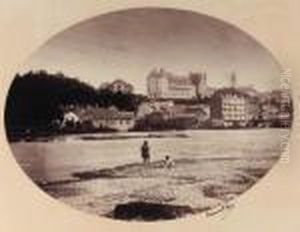Farnham Maxwell-Lyte Paintings
Farnham Maxwell-Lyte was a notable English photographer and chemist born in 1828. Although not as widely recognized as some of his contemporaries in the field of photography, Maxwell-Lyte made significant contributions, particularly in the development of early photographic techniques and in the documentation of the landscapes and architectural heritage of France and England.
Maxwell-Lyte was educated in England and showed an early interest in both chemistry and photography, fields that were in their nascent stages during his formative years. He pursued these interests throughout his life, combining his scientific knowledge with his passion for capturing images. His work as a chemist informed his photographic practice, allowing him to experiment with and refine various photographic processes.
Throughout the mid to late 19th century, Maxwell-Lyte focused on landscape and architectural photography. He was drawn to the picturesque and the sublime, capturing the rugged landscapes of the British Isles and the architectural grandeur of French cathedrals and châteaus. His photographs are characterized by their clarity, attention to detail, and the ability to convey the texture and atmosphere of the subjects.
Maxwell-Lyte's contributions to photography extend beyond his own practice. He was involved in the early photographic societies in England, where he shared his technical knowledge and advocated for the recognition of photography as both an art and a science. Despite the limited technology of the era, his work exhibited a high degree of technical proficiency and artistic sensitivity, qualities that have allowed his photographs to be appreciated by later generations.
Farnham Maxwell-Lyte passed away in 1906, leaving behind a legacy that, while perhaps not as celebrated as some of his peers, is nonetheless significant for its contribution to the early development of photography. His photographs not only serve as historical documents but also as testaments to the technical and artistic possibilities of photography during its formative years.

